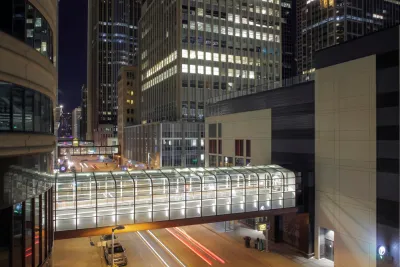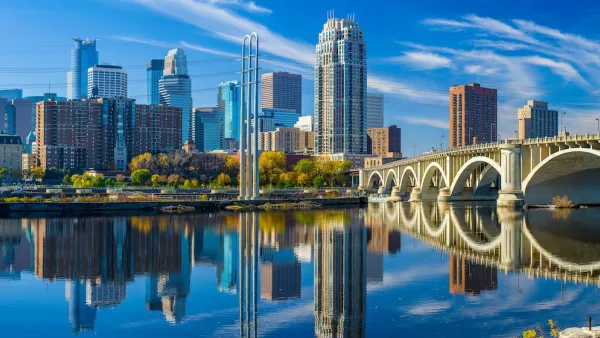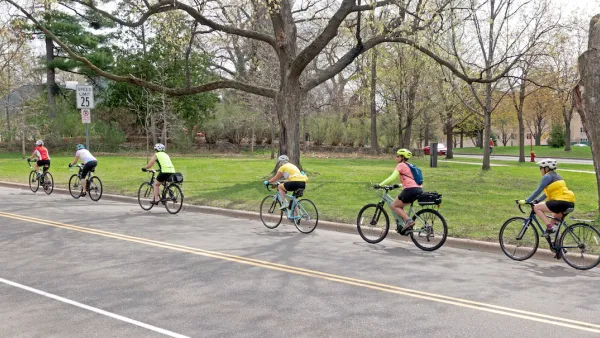Already a source of eternal controversy for their effects on street life and local business, pedestrian skyways have proven even more problematic during the pandemic.

Jake Blumgart reports on the latest developments in the planning of pedestrian skyways—the effects of the pandemic adding new questions about the effects of skyways local retail and public safety.
Blumgart helpfully notes the history of skyway planning and development in the Twin Cities, where this story focuses its attention:
Minneapolis inaugurated the skyway era in 1962 and eventually built out a system with 9.5 contiguous miles of second-story connections between office buildings, hotels and housing towers. St. Paul soon followed, and has five miles of its own. The idea was to compete with suburban office parks and shopping malls, giving aged downtowns an edge — especially in the winter months.
The results, however, have underwhelmed:
From the beginning, skyways were controversial. Critics feared they would imperil existing sidewalk-facing businesses. Today, the streetscape of the two cities is remarkably quiet. With consumer dollars focused on the second floor, street-level stores and restaurants suffer. (It’s worth noting that downtowns as varied as Baltimore and Los Angeles manage a similar deadening effect without skyways.)
The pandemic has accelerated some of the less desirable effects of the skyway approach to downtown circulation. With office emptied out, like they are in so many other cities, the skyways in the Twin Cities have become dark and filled with litter, cigarette smoke, and encampments, according to Blumgart.
The future of the skyways depends on how many people return to the office if and when the public health situation improves, according to the article. While the trends indicate a return to the office, the daytime office population of the Twin Cities is still far below the pre-pandemic precedent.
FULL STORY: The Twin Cities Skyways Face an Uncertain Future

Analysis: Cybertruck Fatality Rate Far Exceeds That of Ford Pinto
The Tesla Cybertruck was recalled seven times last year.

National Parks Layoffs Will Cause Communities to Lose Billions
Thousands of essential park workers were laid off this week, just before the busy spring break season.

Retro-silient?: America’s First “Eco-burb,” The Woodlands Turns 50
A master-planned community north of Houston offers lessons on green infrastructure and resilient design, but falls short of its founder’s lofty affordability and walkability goals.

Test News Post 1
This is a summary

Analysis: Cybertruck Fatality Rate Far Exceeds That of Ford Pinto
The Tesla Cybertruck was recalled seven times last year.

Test News Headline 46
Test for the image on the front page.
Urban Design for Planners 1: Software Tools
This six-course series explores essential urban design concepts using open source software and equips planners with the tools they need to participate fully in the urban design process.
Planning for Universal Design
Learn the tools for implementing Universal Design in planning regulations.
EMC Planning Group, Inc.
Planetizen
Planetizen
Mpact (formerly Rail~Volution)
Great Falls Development Authority, Inc.
HUDs Office of Policy Development and Research
NYU Wagner Graduate School of Public Service



























